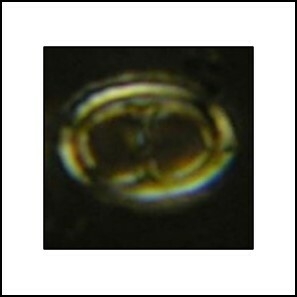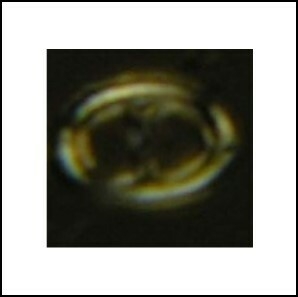Amphizygus megalops
Set number: 52
-
1
-
2
-
3
-
4
-
5
-
6
-
7
-
8
10µm
Amphizygus megalops Blair & Watkins, 2009
Amphizygus brooksii Bukry, 1969 early morphotype - Bralower and Bergen, 1998, p. 73, pl2, figs. 7a-b
Moderately large loxolith having a non-birefringent outer wall and a birefringent inner wall and a large central area. The yoke-cycle is very narrow and forms the symmetrical diagonal cross with the distal process. The pores along the long axis are large whereas the triangular pores along the short axis are vestigial.
Amphyzygus megalops differs from Amphizygus brooksii brooksii Bukry (1969) and Amphizygus brooksii nanus Bukry (1969) by having a birefringent additional inner wall.
Blair, S. A. & Watkins, D. K. (2009): High-resolution calcareous nannofossil biostratigraphy for the Coniacian/Santonian Stage boundary, Western Interior Basin. - Cretaceous Research., 30(2): 367-384.
Bukry, D., (1969): Upper Cretaceous coccoliths from Texas and Europe. - The University of Kansas Paleontological Contributions, Article 51 (Protista 2): 1-79.

